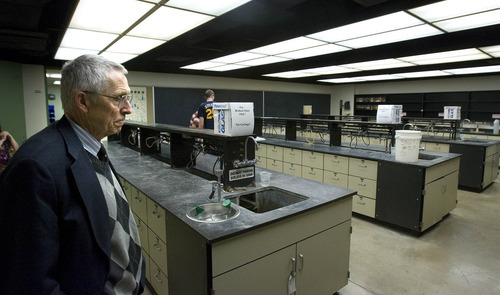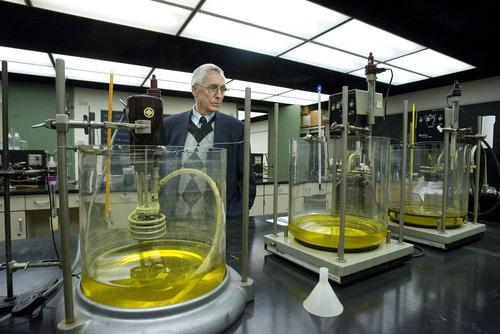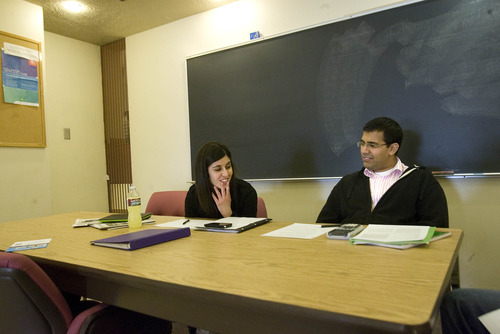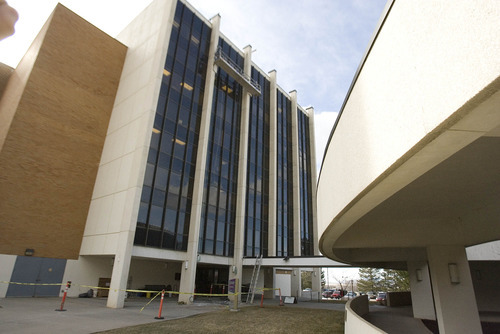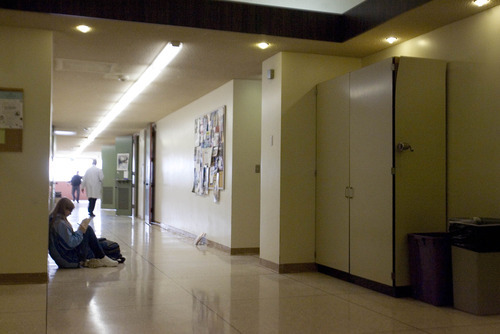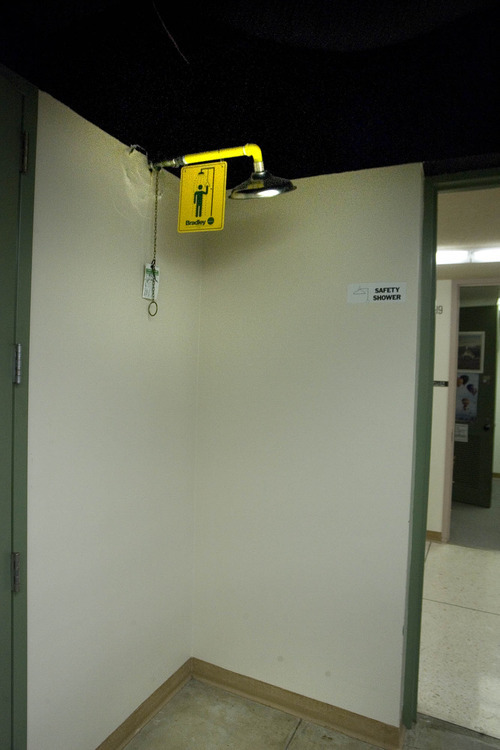This is an archived article that was published on sltrib.com in 2012, and information in the article may be outdated. It is provided only for personal research purposes and may not be reprinted.
Ogden • Outside the fifth-floor elevator at Weber State University's Science Lab Building is a table surrounded by eight chairs and a blackboard. Usually crammed with chemistry students, this area is what passes for a group study area in the 1969 building that officials are desperate to replace.
But they need $63 million from taxpayers to build a 200,000-square-foot replacement at the heart of the Ogden campus. The existing building has various safety concerns, but it also cannot accommodate 21st-century science education. Ceilings are too low to support labs under today's standards. Some floors lack women's restrooms. Cabinets that secure dangerous chemicals are falling apart. The fume hoods' suction, which is supposed to whisk dangerous gases out of the labs, is anemic.
"A chemistry floor without a sprinkler system? Today that would be illegal," said chemistry professor Spencer Seager, who has been teaching at Weber since 1961. "Look under the safety showers. There's no drains. That's crazy. We can't even demonstrate how to use them."
Although Weber's College of Science long ago outgrew the building, officials had been fixated on securing funding to expand the Davis campus, which came through last year. Now they are turning their attention to the big lab building on the northeast corner of campus.
The proposed replacement vaulted to the top of the Board of Regents' wish list for state funding, behind only the University of Utah's long-standing $50 million request to upgrade its decrepit utilities lines. That the building holds STEM fields, education-speak for science, technology, engineering and math, probably helps its chances because lawmakers are very public in their desire to see more science and engineering students graduate from Utah universities.
"We knew that when people started looking at the science building the project would sell itself," said Norm Tarbox, vice president for administrative services. "There are issues with [Americans with Disabilities Act] access. It's full of asbestos. It's a seven-story, top-heavy building that would not fare well in a significant seismic event."
The project came in fifth on an appropriation subcommittee's priority list last week, which gives it an outside chance of funding this session.
Weber's plan is to build a replacement where Buildings 3 and 4 now stand. These are two of Weber's original structures on its central quad around the clock tower. The school would see a net gain of 30,000 square feet, but more importantly, the College of Science would gain facilities that enable students to work together and with faculty on actual research, officials say.
"[What] we know about how students learn best has changed. Active engagement works best, and we don't have those kinds of facilities that allow for hands-on learning and in-depth understanding relative to their fields," said David Matty, Weber's new science dean.
"The boundaries between STEM disciplines have really been blurring. Having all of our departments under one roof would surely foster more opportunities for collaboration," he said.
"It's exciting when people from different disciplines choose to work together and find ways to solve problems and move into new areas of research and learning. I want to encourage that."
The science building's woes are in a part a consequence of building on the cheap, a common practice in the 1960s, when college campuses were rapidly expanding to accommodate a demographic surge associated with the baby boomers. When Seager joined the Weber State College faculty in the early 1960s, the school had recently started awarding four-year degrees and was hiring lots of young faculty.
Several major buildings went up during the decade after Seager's arrival. He was assigned to the design committee for the science building, which had a $4.5 million budget. Corners were cut, he said.
Another Weber building from this era, the Social Science Building, is in serious need of renewal, according to Tarbox. Rather than seek state money, the university has launched a campaign to raise $22 million to renovate it and enclose its patios. Weber also seeks an $8 million revenue bond to expand the Stromberg Center by 35,000 square feet to accommodate fitness and wellness facilities.
But the science building presents the most pressing need. "There are no places for students to congregate and talk about what they're learning," said chemistry professor Michelle Paustenbaugh. "Why do you want to learn science if this is the type of environment you'll be learning in?"
Until recently, the fifth floor had chairs in the main hallway for students to use while studying together outside of lab hours. But fire officials had them removed, leaving only the table and chairs outside the elevator. Last week, Chelsie Greer was there studying enzyme kinetics with fellow chemistry major Abram Bernard.
Hoping to work in a crime lab someday, she wants a place where she could count on help with biochemistry.
"I know the equations, but I have never been shown an example," she said.


